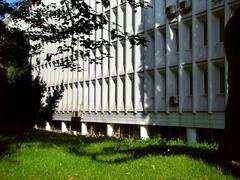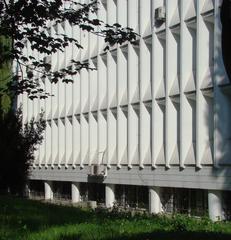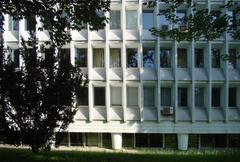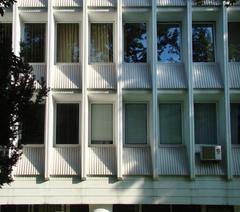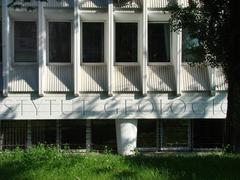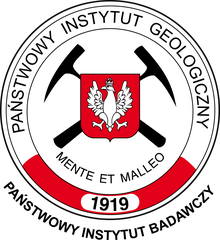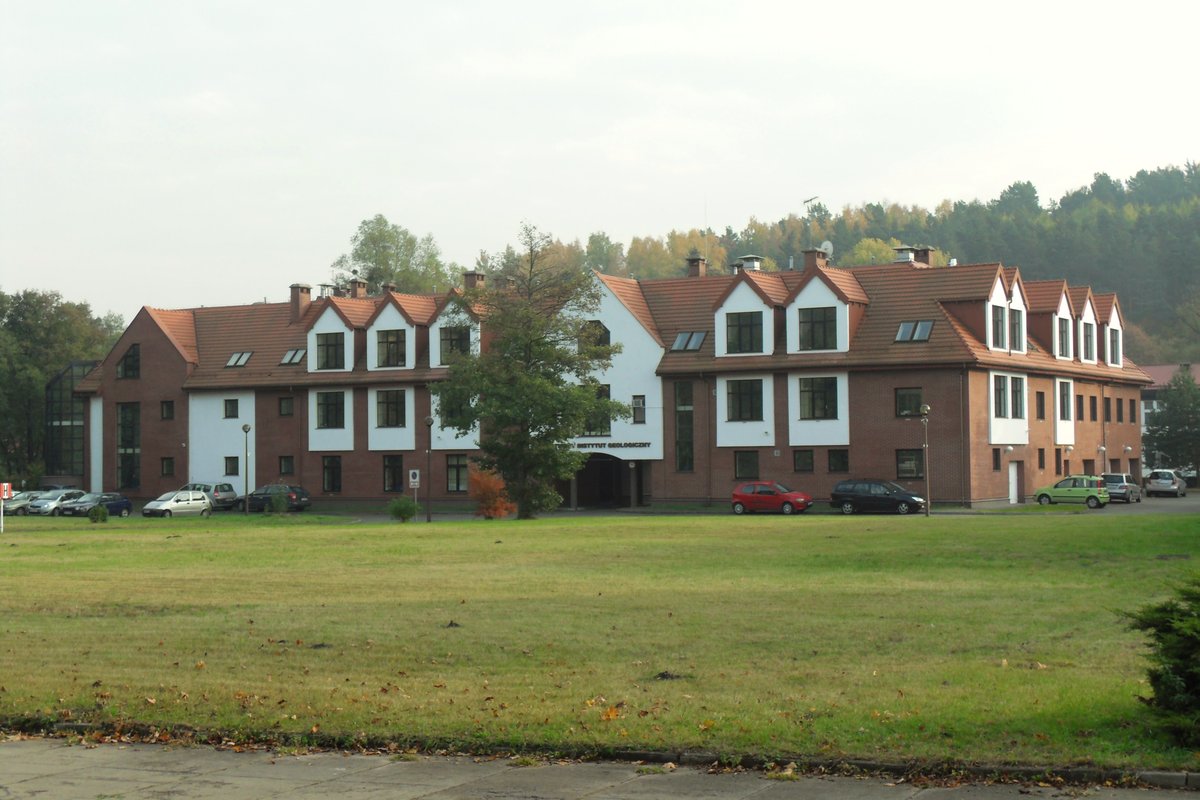
Visiting the Polish Geological Institute in Warsaw, Poland: Tickets, Hours, and Tips
Date: 14/06/2025
Introduction: The Legacy and Role of the Polish Geological Institute
The Polish Geological Institute – National Research Institute (PGI-NRI) in Warsaw is one of the country’s most distinguished scientific and educational institutions. Founded in 1919, the PGI is Poland’s oldest scientific body dedicated to the study of geological structures, mineral resources, and environmental challenges. Centrally situated at 4 Rakowiecka Street, it is home to state-of-the-art research facilities and Poland’s largest geological museum, which boasts over half a million specimens. These include dramatic Ice Age fossils, extensive mineral collections, and interactive displays that appeal to a wide spectrum of visitors—from families and students to research professionals and tourists.
The Institute seamlessly blends its research mission with public engagement. Its museum features immersive exhibitions, spacious halls flooded with natural light, and notable displays such as a life-sized Dilophosaurus model. Accessibility is a priority, with comprehensive provisions for visitors with disabilities. Located near major Warsaw attractions like the Copernicus Science Centre and the Old Town, the PGI is a compelling stop for those interested in both science and culture.
This guide provides all the essential details—including visiting hours, free ticketing, guided tours, and travel tips—to help you plan your visit. For the latest updates, consult the Polish Geological Institute website and the PGI Geological Museum page. Discover the fascinating stories preserved in Poland’s stones and fossils (CitySeeker, Polska dla Dzieci).
Table of Contents
- Discover the Polish Geological Institute: A Must-See Historical Site in Warsaw
- History of the Polish Geological Institute
- Complete Visitor Guide to the Institute and Museum
- Geological Museum Warsaw: Exhibitions, Visiting Hours, and Practical Tips
- Cultural, Architectural, and Institutional Significance
- Summary and Travel Tips
- References and Further Reading
Discover the Polish Geological Institute: A Must-See Historical Site in Warsaw
Visiting Hours and Ticket Information
- Museum: Open Monday–Friday, 9:00 AM–5:30 PM; Sunday, 10:00 AM–3:00 PM; closed Saturdays and select holidays.
- Admission: Free for all visitors. For guided tours or workshops, advance booking is recommended.
How to Get There
- Address: 4 Rakowiecka Street, Warsaw.
- Public Transport: Tram lines 4, 10, or 35 (stop: “Geological Institute”), or metro (Nowy Świat-Uniwersytet station).
- Parking: Limited street parking available nearby.
Accessibility
- The Institute is fully accessible with ramps, elevators, and accessible restrooms. Assistance for visitors with disabilities can be arranged by prior contact.
Guided Tours and Events
- Expert-led guided tours reveal the Institute’s history, research, and museum highlights.
- Special events include open days, temporary exhibitions, lectures, and science picnics.
Highlights and Photographic Spots
- Explore the impressive central hall, geological collections, and outdoor geological garden.
- Notable photo opportunities include the mammoth and woolly rhinoceros skeletons, colorful mineral displays, and architectural features like the glass-roofed hall.
Nearby Attractions
- Enhance your visit with trips to the Copernicus Science Centre, Warsaw University Museum, Łazienki Park, or the UNESCO-listed Old Town.
A Brief History of the Polish Geological Institute
Established in 1919 by the Legislative Sejm, the Institute was pivotal in mapping Poland’s geological resources post-independence. Surviving the devastation of World War II, the PGI not only rebuilt but also expanded its research, contributing major discoveries in copper, silver, coal, and more. In 2009, it attained National Research Institute status, reflecting its central role in Polish resource management and environmental monitoring.
Today, PGI-NRI serves as both the Polish Geological Survey and Hydrogeological Survey, supporting economic development, environmental stewardship, and scientific advancement (PGI official site).
Complete Visitor Guide to the Institute and Museum
Why Visit the PGI Geological Museum?
The museum is the largest and most comprehensive geological collection in Poland, displaying over 500,000 specimens. Its exhibitions are designed for all ages and backgrounds, combining scientific rigor with interactive, engaging displays (PGI Museum).
Essential Visiting Information
- Location: Entrance from Wiśniowa Street, Warsaw.
- Hours: Monday–Friday 9:00 AM–5:30 PM; Sunday 10:00 AM–3:00 PM.
- Admission: Free. Guided tours and workshops require prior booking.
Highlights and Must-See Exhibits
- Permanent Exhibitions: “Earth’s Matter,” “The History of Poland Written in Stone,” “Mineral Raw Materials of Poland,” and more.
- Fossil Displays: Skeletons of Ice Age megafauna.
- Interactive Models: Geological process models, such as the Polish Coal Basin.
Visitor Amenities and Accessibility
- Wheelchair accessible.
- Restrooms, cloakroom, and seating areas available.
- Family-friendly workshops and school programs.
Educational Programs and Guided Tours
- Guided tours (advance booking required), workshops, science picnics, and educational competitions are held regularly.
International Collaboration and Scientific Excellence
- PGI-NRI is a leader in international geological research, collaborating with institutions worldwide and representing Poland in organizations like the United Nations and International Seabed Authority (EDMO profile).
Recommended Nearby Attractions
- Łazienki Park, Royal Castle, Warsaw Uprising Museum, and more—all easily accessible from the Institute.
Geological Museum Warsaw: Exhibitions, Visiting Hours, and Practical Tips
Permanent and Thematic Exhibitions
The museum features eight thematic sections, including:
- Geological History of Poland: Fossils, rocks, and minerals arranged by era.
- Material of the Earth: Fundamental minerals and rocks.
- Polish Building Stone: Stones in Polish architecture.
- Mineral Resources of Poland: Coal, copper, salt, and more.
- Fossilized World: Hundreds of fossil specimens, dinosaur models, and Ice Age skeletons.
- Magmatism, Sedimentation, Diagenesis, Metamorphism: Processes shaping Earth’s structure.
Visitor Experience and Tips
- The museum is laid out on two levels with a central hall and surrounding thematic rooms.
- Non-flash photography permitted.
- Download the museum’s app or audio guide for a self-paced experience.
- Visit on weekdays or early on weekends to avoid crowds.
- Wear comfortable shoes for exploring the extensive exhibits.
Cultural, Architectural, and Institutional Significance
- Architecture: Early 20th-century design with a striking glass roof, spacious arcades, and well-lit exhibition spaces (Polska dla Dzieci).
- Institutional Role: National Geological Survey and Hydrogeological Survey, with regional branches and a marine geology division in Gdańsk (EDMO profile).
- Public Outreach: Free museum entry, educational workshops, and active community events.
Frequently Asked Questions (FAQ)
Q: What are the museum’s visiting hours?
A: Monday–Friday, 9:00 AM–5:30 PM; Sunday, 10:00 AM–3:00 PM; closed Saturdays and select holidays.
Q: Is admission free?
A: Yes, admission is free for all visitors.
Q: Are guided tours available?
A: Yes, but please book in advance.
Q: Is the museum accessible for visitors with disabilities?
A: Yes, with ramps, elevators, and accessible restrooms.
Q: Can I take photos inside?
A: Non-flash photography is permitted; flash and tripods are restricted.
Q: Is the museum suitable for children?
A: Yes, with dedicated workshops and family-friendly exhibits.
Summary: Key Information and Travel Tips
Visiting the Polish Geological Institute and Museum offers a unique blend of scientific exploration, history, and culture. With free admission, engaging exhibits, and a welcoming atmosphere, it’s an ideal destination for families, students, and anyone interested in earth sciences. Centrally located and easily accessible, the museum is a highlight of Warsaw’s cultural landscape. Reserve guided tours in advance, explore digital resources like the Audiala app, and consider combining your visit with other nearby attractions for a comprehensive Warsaw experience (PGI official site, PGI Museum).
References and Further Reading
- Visiting the Polish Geological Institute in Warsaw: History, Tours, and Visitor Information, 2025, PGI-NRI (https://www.pgi.gov.pl/en/about-the-institute.html)
- Discover the Polish Geological Institute and Museum in Warsaw: Visiting Hours, Tickets, and Essential Visitor Guide, 2025, PGI-NRI Museum (https://www.pgi.gov.pl/en/museum.html)
- Geological Museum Warsaw: Visiting Hours, Tickets, Exhibitions & Travel Tips, 2025, PGI-NRI (https://www.pgi.gov.pl/en/museum.html)
- Visiting the Polish Geological Institute Museum in Warsaw: Hours, Tickets, and Historical Significance, 2025, Polska dla Dzieci (https://polskadladzieci.pl/en/mazowieckie/Warsaw/geological-museum-in-warsaw/)
- CitySeeker: Geological Museum of the State Geological Institute, 2025 (https://cityseeker.com/warsaw/887023-geological-museum-of-the-state-geological-institute)
- EDMO profile, 2025, PGI-NRI (https://edmo.seadatanet.org/report/609)
Visuals: Use images of the museum’s exterior, main exhibition halls, fossil displays, and mineral collections. Alt tags should include phrases like “Polish Geological Institute Museum Warsaw” and “Mammoth skeleton exhibit.”
For further exploration, link to articles on other Warsaw museums, Polish mining heritage, and educational resources on geology.

